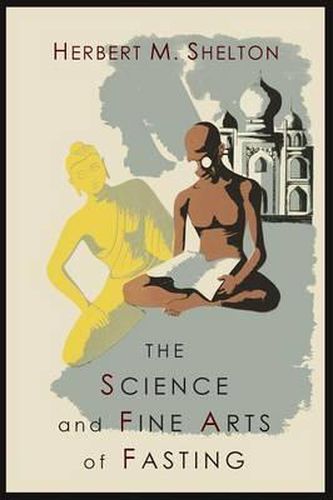The Science and Fine Art of Fasting
Herbert M Shelton

The Science and Fine Art of Fasting
Herbert M Shelton
2013 Reprint of 1963 Edition. Full facsimile of the original edition, not reproduced with Optical Recognition Software. This is the fasting portion only of what was originally published as Fasting and Sunbathing (The Hygienic System, Vol 3). Herbert Shelton wrote 40 books over his 60-year career in health education and natural hygiene. He supervised over 30,000 fasts of chronically ill and terminal patients, losing only three. Shelton’s teachings on fasting inspired Ghandi as well as such popular authors as Fuhrman, the Diamonds, Mercola and Graham. Harvey and Marilyn Diamond said of Shelton: A man of astounding intelligence and understanding, Dr. Herbert Shelton was the greatest health oracle of the 20th century. One of the key tenets of natural hygiene is toxemia + enervation = disease and that symptoms of disease are remedial efforts by the body to return to balance. For example, a fever is instituted by the body to speed metabolic action and kill germs. It is a healing event that should be allowed to run its course, not a dreaded enemy to be suppressed. The best action to take when first becoming ill is to stop eating and rest, which goes contrary to the prevailing advice to take a drug, eat to keep up your strength, and keep on going. When you fast, you are not starving your body of nutrition, because it obtains all the nutrition it needs from its own tissues. But in doing so, the not inconsiderable amount of energy that would have been spent in digestion is now spent in repair of tissues and elimination of toxins. Long fasts of up to three months followed by healthy living practices can (but not always) reverse chronic degenerative diseases such as arthritis, heart disease, colitis, migraines, mental illness, even cancer. (See also Fasting and Eating for Health: A Medical Doctor’s Program for Conquering Disease.) This book will teach you most of what you need to know to conduct a fast of any length. The chapters are: 1. Definition of fasting 2. Fasting among the lower animals 3. Fasting in man 4. Bill-of-fare for the sick 5. Autolysis 6. Fasting is not starving 7. Chemical and organic changes during fasting 8. Repair of organs and tissues during fasting 9. The influence of fasting on growth and regeneration 10. Changes in the fundamental functions while fasting 11. The mind and special senses during a fast 12. Secretions and excretions 13. Bowel action during fasting 14. Fasting and sex 15. Rejuvenescence through fasting 16. Gain and loss of strength while fasting 17. Gain and loss of weight during fasting 18. Fasting does not induce deficiency disease 19. Death in the fast 20. Objections of the fast 21. Does fasting cure disease? 22. The rationale of fasting 23. The length of the fast 24. Hunger and appetite 25. Contra-indications of fasting 26. Fasting in special periods and conditions of life 27. Symptomatology of the fast 28. Progress of the fast 29. Hygiene of the fast 30. Breaking the fast 31. Gaining weight after the fast 32. Living after the fast 33. Fasting in health 34. Fasting in acute disease 35. Fasting in chronic disease 36. Fasting in drug addiction 37. Fasting versus eliminating diets
This item is not currently in-stock. It can be ordered online and is expected to ship in approx 2 weeks
Our stock data is updated periodically, and availability may change throughout the day for in-demand items. Please call the relevant shop for the most current stock information. Prices are subject to change without notice.
Sign in or become a Readings Member to add this title to a wishlist.

